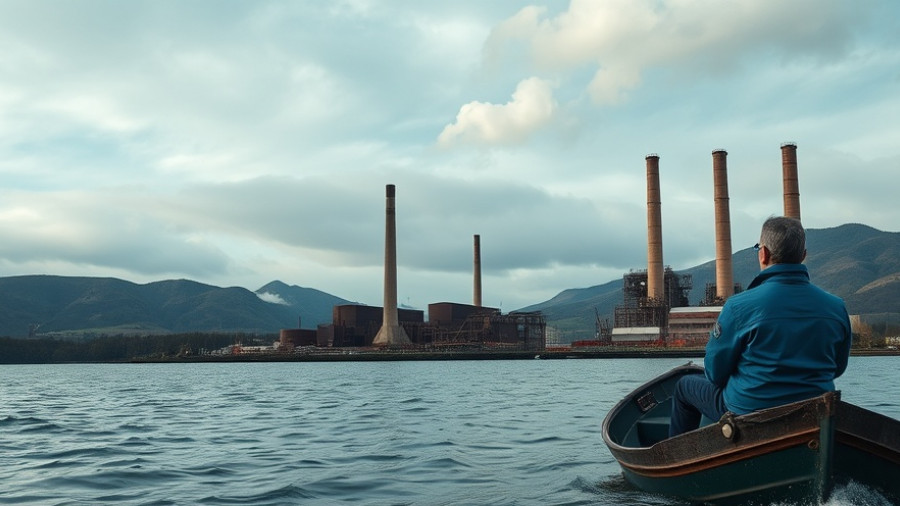
Indonesia's Coal Power Expansion: A Grey Cloud Over a Nation
In the province of Banten, Indonesia, the skyline is dominated by coal-fired power plants, intensifying an air of pollution and climate concern. Notably, the Java 7 coal power station stands out, exemplifying both the nation’s dependence on coal and the significant influence of Chinese investment. While the Indonesian government aims for economic growth, this expansion raises critical questions about the long-term environmental consequences.
Understanding the Global Coal Landscape
Indonesia now boasts the world’s fourth-largest coal fleet, with over 57 gigawatts of coal-fired capacity expected to double by the end of President Joko Widodo's term in 2024. Chinese companies have played a critical role by swiftly financing projects, especially in light of their significant investment through the Belt and Road Initiative, which aims to reshape global development.
The Implications of New Coal Plants
As climate change spurs extreme weather patterns globally, the emergence of new coal plants in Indonesia poses a troubling challenge to the country’s climate targets. The investments often serve to meet energy demands for industrial growth, primarily in nickel refining operations that support electric vehicle production. This paradox—new coal power for cleaner energy solutions—highlights the complexity of transitioning to renewables while being reliant on the most polluting fuel sources.
Chinese Investments: A Double-Edged Sword
While Indonesian leaders view partnerships with Chinese companies as beneficial for fulfilling development promises, the environmental cost is steep. Growing emissions and pollution from these coal-fueled projects have been noted, as they contribute to Indonesia being the seventh-largest emitter of carbon dioxide globally. Additionally, despite a pledge from President Xi Jinping to halt financing for new overseas coal projects, 17 generating units remain in various stages of construction across Indonesia.
Finding a Balance: Economic Growth vs. Environmental Responsibility
As Indonesia grapples with the dual aim of economic growth and environmental obligation, ambitious initiatives like the Just Energy Transition Partnership (JETP) have been introduced. However, challenges abound in converting pledged support into actionable projects, potentially leaving Indonesia trapped in a cycle of coal reliance.
Local Voices: Human Experiences Amid Industrial Growth
Community members, such as local fisherman in Cilegon, contend with the consequences of expanding industrial plants. Many report worsened air quality and health issues tied to coal emissions, emphasizing the urgent need for a balanced approach to development that prioritizes human welfare alongside economic aspirations.
Call to Action: Rethinking Our Energy Choices
The situation calls for a reevaluation of energy choices. Wealthy nations have a responsibility to assist countries like Indonesia in transitioning to cleaner energy sources while acknowledging the economic pressures that drive reliance on coal. For Indonesia, the future hinges on whether international coal initiatives can provide the necessary support to retire old plants and invest in sustainable practices.
 Add Row
Add Row  Add
Add 




Write A Comment